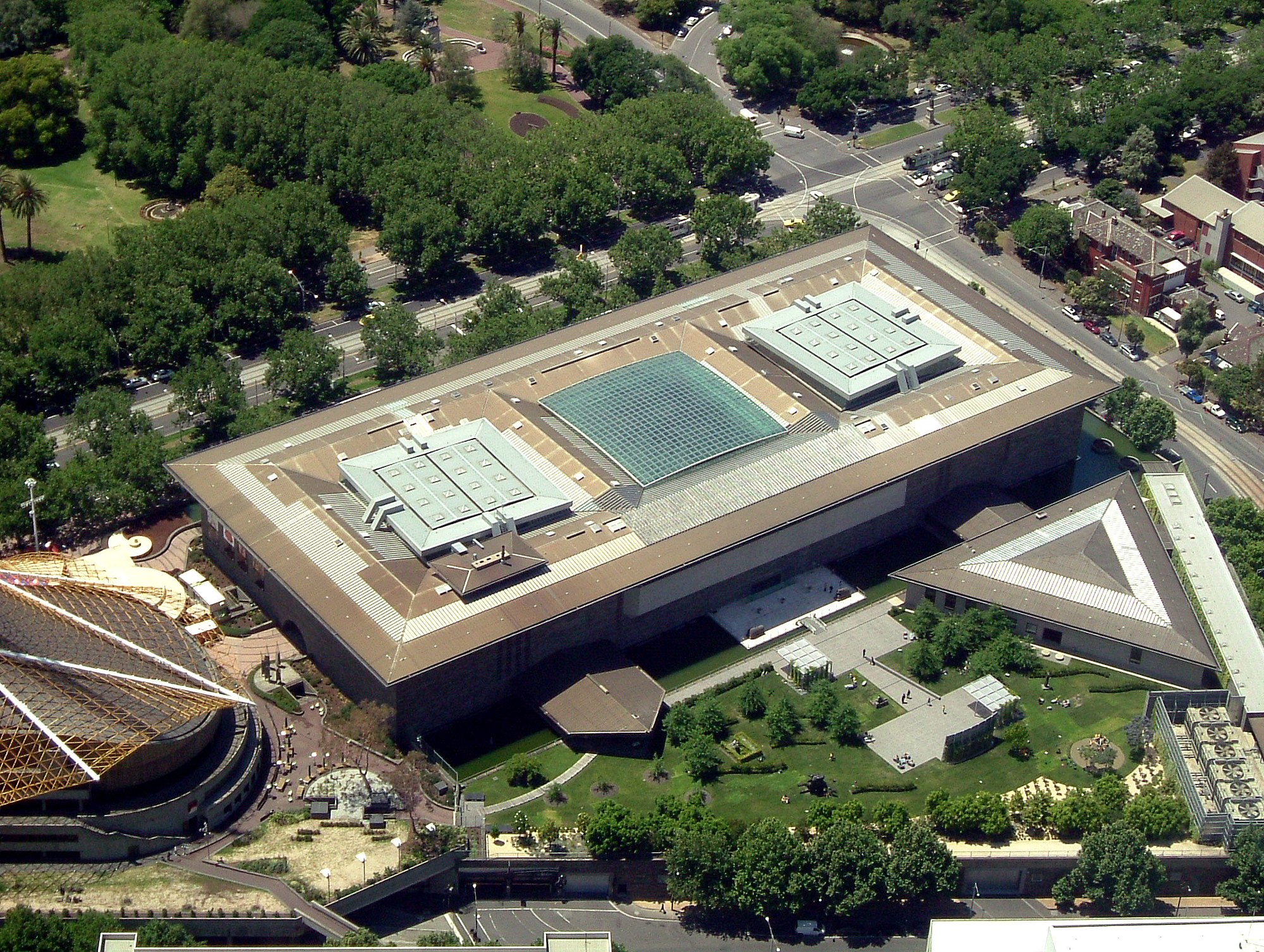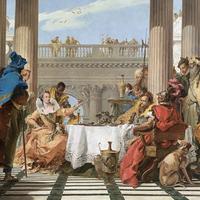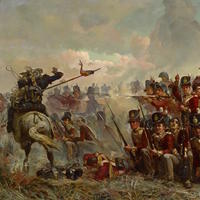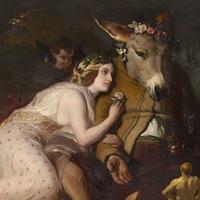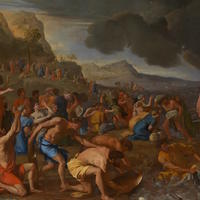More about National Gallery of Victoria

Contributor
The Australian colonies were not yet federated in 1861, so the founders of the National Gallery of Victoria included the term "National" in its name.
Today, "National" is no longer an accurate way to describe the gallery, but, for marketing purposes, the directors have opted to keep the name, despite criticism. The Gallery is, in museum-business speak, a "star." While it attracts less foot traffic than "superstars" like the Louvre, it is very popular among Australians and attracts about 70% of its visitors from Australia, whereas visitors to the Louvre are about 70% international tourists. The collection of the National Gallery of Victoria, or NGV, is a central feature in its appeal. It contains an original impression, for example, of the seminal woodblock print The Great Wave off Kanagawa by ukiyo-e artist Katsushika Hokusai.
In 1967, itself a year of general turbulence, transformation, and reflection worldwide, an exhibition arrived at the NGV that would cast an impression over the entire subsequent history of art. Charles Green and Heather Barker write, with embarrassing hyperbole, that all, yes all, "artists and students active in Australia during the late 1960s remember visiting the show." Green and Barker are using poetic license here to make a larger, and revealing, point: this "watershed" moment notified the world that "making and understanding Australian art as regional art – landscape or Antipodean-style allegorical figuration – was exhausted and now reactionary." Artists Noel Counihan, Herbert McClintock, and Rod Shaw disliked the show, as it presented artistic idioms apparently uncoupled from humanism, culture, and representation, but it opened a space of possibility for artistic narratives which transcended the figure-ground formula.
From the perspective of the mathematical discipline of statistics, the NGV has provided important data for improving the efficiency of fire engineering design. By fully evacuating the gallery to test its fire response, and using the EVACNET+ computer software with distinct mathematical parameters, researchers have been able to capture data on egress times that compared well with the software's predictions. The test evacuation also showed that if buildings include fire stairways separate from the normal pattern of population circulation within the building, people will exit via "familiar paths, usually the way they entered." Research into the chaotic area of egress modeling is important for the protection of life during disasters.
Sources
- Chauhan, Cushla. "Meet the collector behind the National Gallery of Victoria's Comme des Garçons exhibition." Vogue, Nov. 8, 2019, https://www.vogue.com.au/culture/lifestyle/meet-the-collector-behind-th…
- Green, Charles, and Heather Barker. "The Watershed: Two Decades of American Painting at the National Gallery of Victoria." Art Journal 50, no. 64 (1982): 65-76.
- "Hokusai." NGV, https://www.ngv.vic.gov.au/exhibition/hokusai/.
- Isa, Badrul, and David Forrest. "A qualitative case study of the implementation of education programs at the National Gallery of Victoria (NGV), Australia." Procedia: Social and Behavioral Sciences 29 (2011): 1905-1913.
- Johnson, Peter, Vaughan Beck, and Mahmut Horasan. "Use of egress modelling in performance-based fire engineering design-A fire safety study at the National Gallery of Victoria." Fire Safety Science–Proceedings of the Fourth International Symposium 4 (1994
- Rentschler, Ruth, Kerrie Bridson, and Jody Evans. "Portrait of a Star: National Gallery of Victoria." International Journal of Arts Management 13, no. 2 (Winter 2011): 59-73.
- Westbrook, Eric. "The National Gallery of Victoria, Melbourne." Museum International 17, no. 3 (1964): 136-40.
Featured Content
Here is what Wikipedia says about National Gallery of Victoria
The National Gallery of Victoria, popularly known as the NGV, is an art museum in Melbourne, Victoria, Australia. Founded in 1861, it is Australia's oldest and most visited art museum.
The NGV houses an encyclopedic art collection across two sites: NGV International, located on St Kilda Road in the Melbourne Arts Precinct of Southbank, and the Ian Potter Centre: NGV Australia, located nearby at Federation Square. The NGV International building, designed by Sir Roy Grounds, opened in 1968, and was redeveloped by Mario Bellini before reopening in 2003. It houses the gallery's international art collection and is on the Victorian Heritage Register.
The Ian Potter Centre: NGV Australia, designed by Lab Architecture Studio, opened in 2002 and houses the gallery's Australian art collection.
A third site, The Fox: NGV Contemporary, is planned to open in 2028, and will be Australia's largest contemporary gallery.
Check out the full Wikipedia article about National Gallery of Victoria

